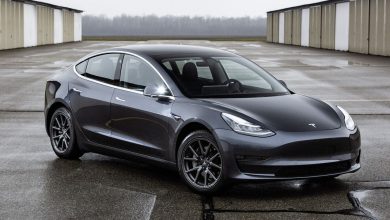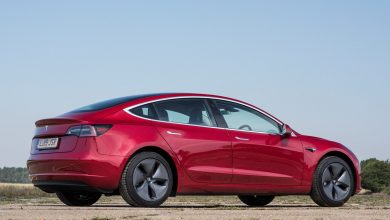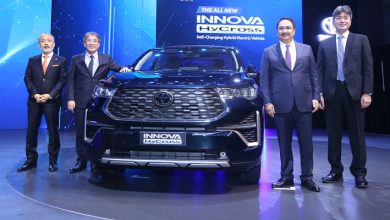
The first official photographs of the special version of the 812 Superfast were released recently just before the scheduled world premiere on May 5. Ferrari has not disclosed the model’s name or any technical information officially and informed in the press release that it will be revealed during the launch. However, we already have the name that we can assure you of. Nope! It won’t be called the Imola. It takes a page from Alfa Romeo’s book as rumors have it that the new model has been registered under the Ferrari 812 Competizione moniker.
Keeping alive the legacy of 599 GTO and F12 TDF, the soon to be launched Ferrari 812 Superfast could be the most potent and extreme V12 Berlinetta motor sportscar ever. Retaining the profile of a standard 812 Superfast, the Competizione will pack in the most powerful naturally-aspirated V12 Ferrari engine yet.
The only details revealed by the Italian supercar-maker claims that the venerable 6496cc F140 V12 motor will generate a max power of 818bhp (an uplift of 41bhp from the standard 812 Superfast). And to achieve this power figure the V12 revs all the way up to 9500rpm which means a full 1000rpm jump from the standard variant. Ferrari has confirmed that it has redesigned the elements like the valvetrain and exhaust systems to get these mind-boggling figures.

The current 812 Standard has a top speed of around 339kmph and is capable of doing 0-100kmph in just 2.9sec. We expect the Competizione to take a lesser count on the stopwatch with a somewhat similar top speed. The new supercar now has more carbon-fibre elements on the same aluminium spaceframe chassis which will see a small drop in weight compared to the 812 Superfast (1744kg). This will be another added bonus to its sprint capabilities.

The new bodywork has been designed by Ferrari’s in-house Centro Stile, with the automaker claims of an aesthetic emphasis on airflow and finer aero management. Going by the released images, the nose of the supercar has a larger single opening in the front bumper. It has two outer cooling ducts that float within the main grille. The splitter also seems deeper and wider than the standard variant, edged with vaned air deflectors that separate the air from the front wheel arches. Ferrari has also graphically split the bonnet in two with an arching carbon-fibre wing that extends out to meet each front quarter panel, leaving subtle slip gaps that also vent the engine bay.

The rear now has a new fixed ducktail and triple vent motif like the 250 GTO with a completely redesigned bumper. It features a vast full-width rear diffuser with two oblong exhaust outlets at its outer edges. The tail lights come in the same twin-roundel design as the standard 812, but now sit within the carbon-fibre moulding that slims their appearance. The rear glass has also been replaced with a carbon-fibre panel, with Ferrari utilising the same virtual rear-view mirror technology, via a small rear-pointed camera, as seen on the SF90 supercar.

The released images don’t suggest any major changes on the inside, the basic dash layout has been largely kept intact from the standard 812, with an introduction of a new central tunnel. The central console comes with the same H-gate gear selector setup as found in Ferrari’s Roma and SF90. However, we believe Ferrari will give the buyers a list of customisation options to alter the feel and finish of the cabin as per their desire.
The rest of the finer details will be unveiled on May 5th along with the pricing details, which will be most probably be higher than the current 812 Superfast’s Rs 5.2 crore tag. Moreover, this will be a special edition of an already pretty special car from one of the most sought after supercar manufacturers out there. So, money will not be the only thing needed to get your hands on this one!




